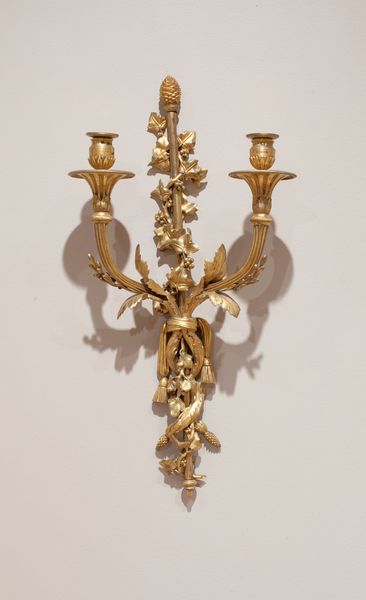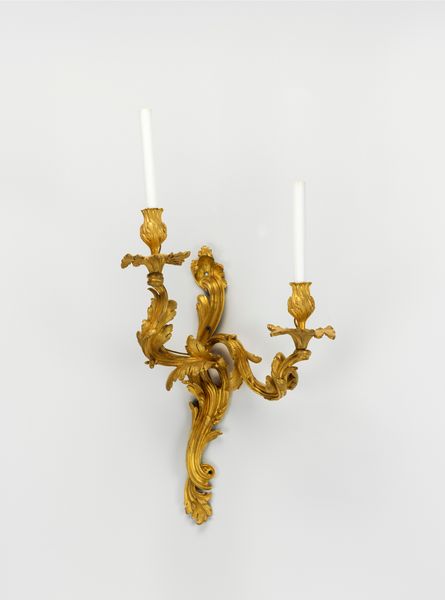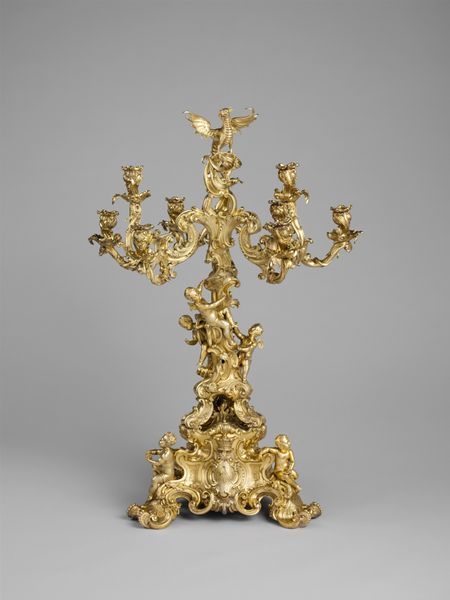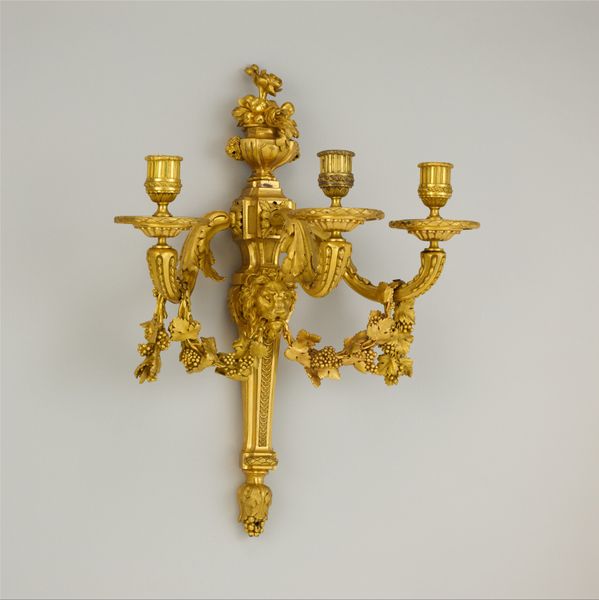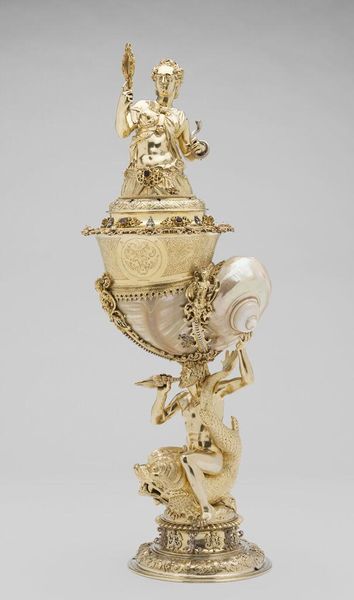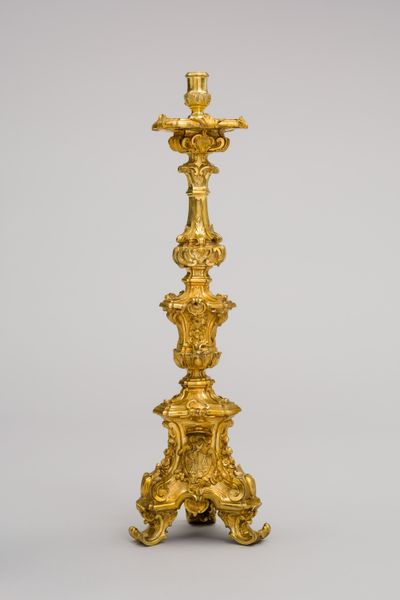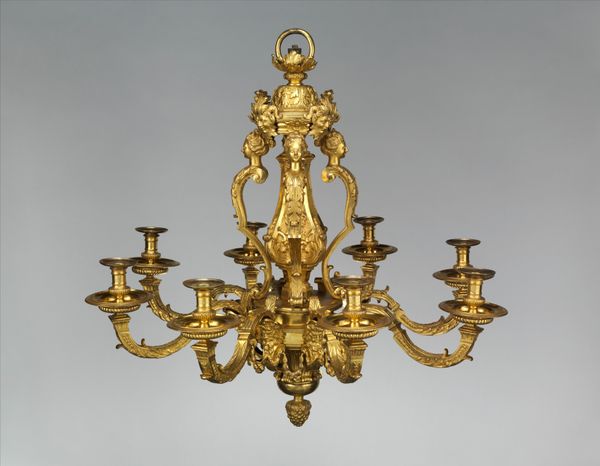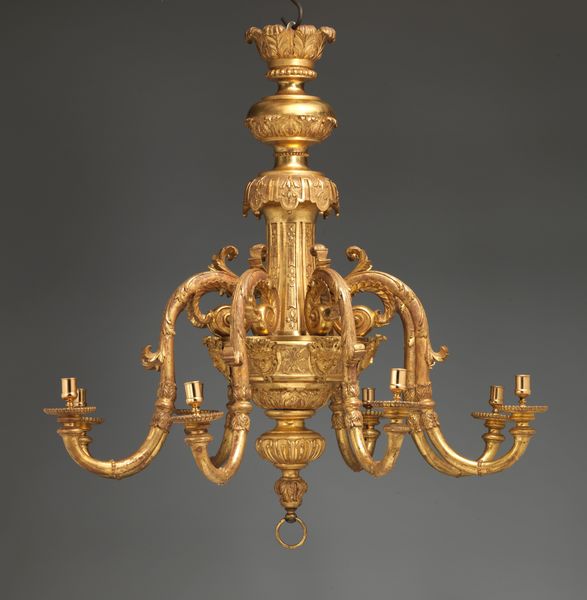
Dimensions: 22 3/4 x 12 x 5 3/4 in. (57.79 x 30.48 x 14.61 cm)
Copyright: Public Domain
Curator: Looking at this brass wall sconce from the 19th century evokes an immediate sense of gilded elegance. Editor: Absolutely. There’s a kind of theatrical flourish to it, isn’t there? A certain exuberance and a nod to luxury. This object speaks to how Baroque sensibilities persisted well into the 1800s. Curator: Exactly. We must remember that decorative arts like this sconce were never merely functional. The location of its display here in the Minneapolis Institute of Art reflects changing tastes in design. These ornate fixtures originally signified wealth and power, announcing one’s status within a specific social order. What does a gilded wall fixture say today about wealth and power in the domestic or public sphere? Editor: I think you've identified a central tension of how decorative arts participate in the creation of gender and class differences. The detail of grapevines on it makes me think about celebrations of all sorts: the ritual of candlelight, gatherings… and the gendering of interior spaces. This would most likely be displayed inside rather than out, but its subject matter ties back to nature, abundance, and ultimately patriarchal lineage through the symbol of the pinecone, an age-old sign of virility. Curator: Indeed. Furthermore, the adoption of a seemingly timeless Baroque style becomes really interesting, almost politically charged. What did the commissioners intend in embracing such motifs in the 19th century, and for what kind of architectural space? How would these designs be consumed and interpreted at the time, especially in rapidly changing social and economic climates? Editor: Questions of labor also arise for me. To hand-craft a seemingly simple decorative item like this with such detail speaks volumes about human effort and technical skill, something increasingly lost to rapid industrialization during this time period. It's also a great reminder to consider what survives in museum collections: the domestic objects of ordinary and marginalized people are frequently overlooked or discarded. Curator: Absolutely. Thank you for adding those important insights, and that’s what makes further research into even everyday objects like this a worthwhile endeavor. Editor: Definitely a fruitful avenue for exploring connections between art, identity, and history.
Comments
minneapolisinstituteofart about 2 years ago
⋮
These wall sconces, which are in the Louis XVI style, probably date from the nineteenth century. They may have been made by Henri Dasson & Cie. (1825-1896) of Paris as they correspond to a pair advertised by Dasson in 1894. A related pair is in the collection of Waddesdon Manor in England, the country house of Baron Ferdinand de Rothschild.
Join the conversation
Join millions of artists and users on Artera today and experience the ultimate creative platform.
